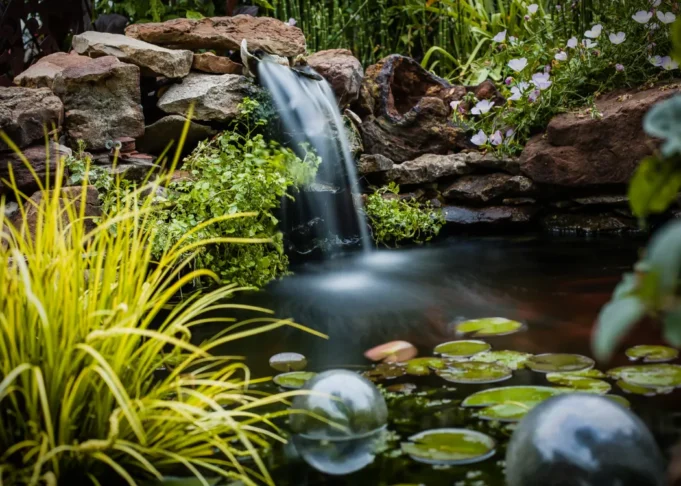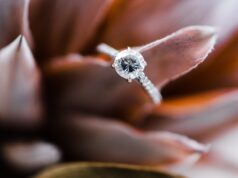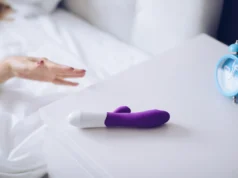A Koi pond isn’t just a peaceful water feature—it’s like a special world that needs good care to keep your Koi fish happy. One of the important parts of taking care of your pond is having the right filters. These filters help keep the water clean and healthy for your fish. In this guide, we’re going to look at different kinds of filters and help you decide on the best one for your Koi pond. That way, you can have clear water and happy fish all around.
Why Filters Matter
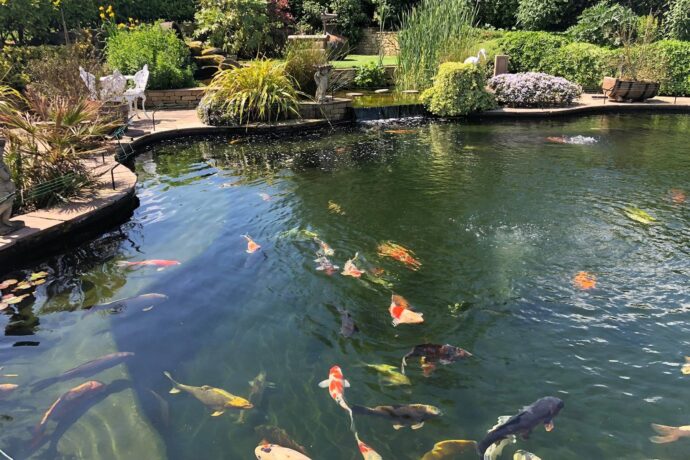
Let’s start off with the first question – why do ponds need a filtration system in them?
Purchasing Koi Fish isn’t cheap – people want to make sure that when they welcome Koi fish into their home, not only will they survive, but they can thrive. When properly taken care of, it is not uncommon for a Koi to live up to 30 years. So after spending all the money in the first place to get the Koi, surely it only makes sense that you need to get the best equipment to provide a home for them?
In a Koi pond, filters are the first line of defense against bad stuff that can make the water dirty and not a place where your fish can thrive. Filters help clean out things like leaves, leftovers, and stuff from your fish that can make the water unliveable. When the water is clean, it helps your fish stay strong and live for a long time.
When you have clean water in your pond it also allows you to view your underwater friends more easily. You are able to view their bright colours shimmering as they effortlessly swim across the pond and be able to admire them in their full beauty.
Let’s break down all the different Kinds of Filters for Koi Ponds and how they aim to keep your pool clean.
1. Filters that Catch Things
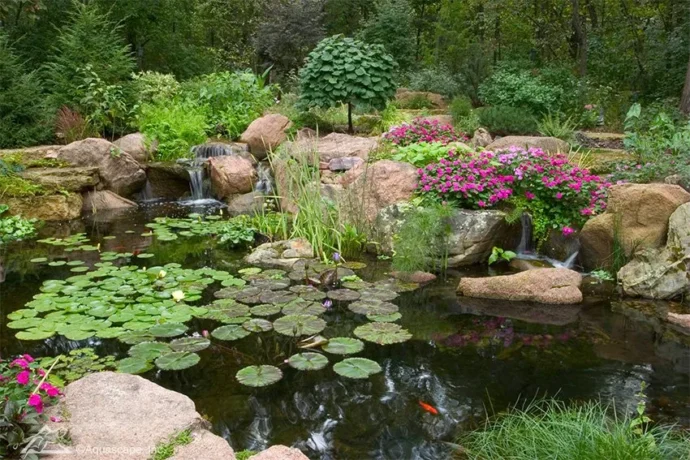
Some filters work by catching big stuff like leaves and food bits. They use things like sponges, brushes, and screens to grab onto these things as the water goes through. This helps stop the water from getting messy and keeps it nice.
2. Filters that Use Bacteria
Other filters use tiny helpers called bacteria. These bacteria eat up yucky stuff like ammonia and nitrite, which can be harmful to your fish. When the bacteria eat them up, they make the water safe for your fish to swim in.
3. Clearing Up with Light
There are also filters that use special light to get rid of tiny plants called algae. These plants can make the water green and not clear. The light stops them from growing, so the water stays nice and clear.
Picking the Best Filters for Your Pond
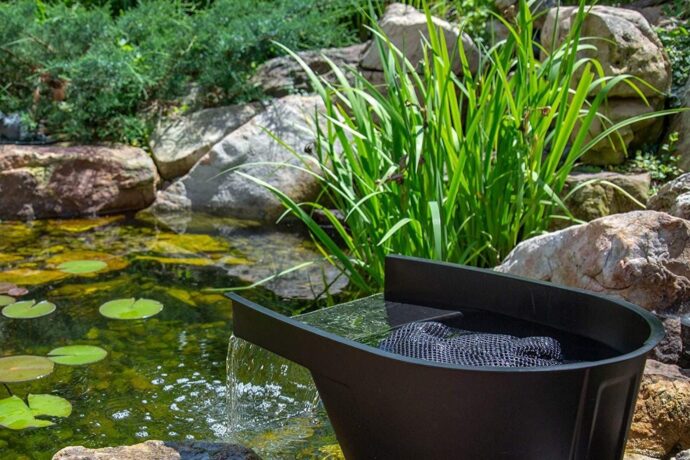
1. How Big is Your Pond and How Many Fish?
Think about how big your pond is and how many fish you want to have. This helps you choose the right filters. If your pond is big and you want a lot of fish, you’ll need stronger filters. When you allow more fish into your pond it will also mean there is more waste products in the water, so larger filters are needed to keep your pond clean. As a general rule of thumb, you should have at least one square foot of filter surface area for every inch of fish in your pond, although this may vary from pond to pond.
2. Using Both Kinds of Filters
The best filters have both the kinds we talked about earlier—ones that catch things and ones that use bacteria. Catching things helps keep the water clean, and bacteria filters make sure the water is safe for your fish.
3. How Fast Does the Water Move?
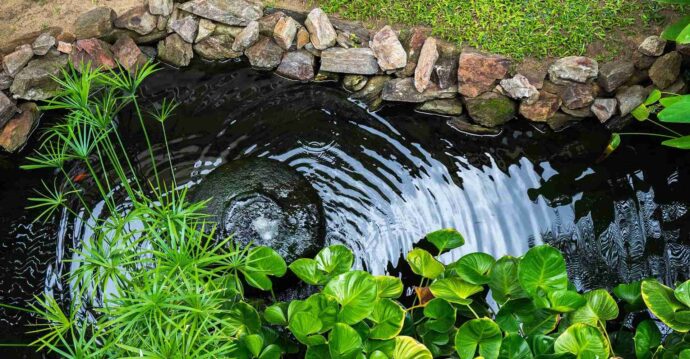
Look at how fast the water moves in your filters. If it moves quickly, it’s good because all the water gets cleaned up faster. This is important to make sure the water is nice for your fish.
4. Using Light Filters, Too
Light filters are cool to add because they stop those tiny plants from making the water green. They’re not the main filters, but they help keep the water looking great.
5. Cleaning the Filters Easily
Choose filters that you can easily clean. Cleaning them is important so they keep working well and don’t get clogged up.
The Best Filters for Your Pond
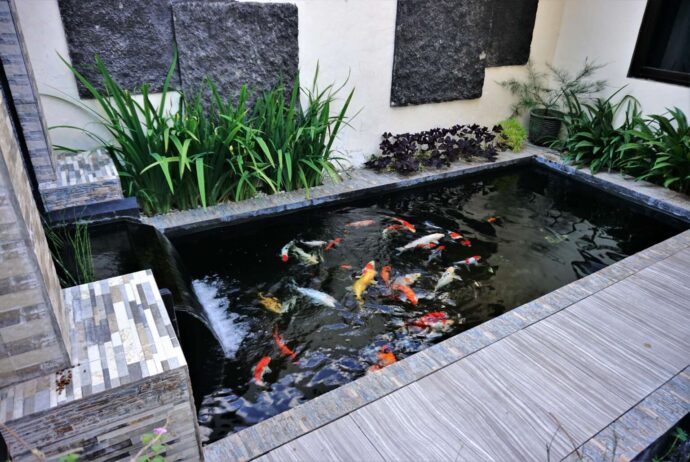
1. Filters that Pressurize
These filters do both jobs—catching stuff and using bacteria—in one small box. They’re easy to put in and take care of, and some even have the light thing to clear up the water.
2. Bead Filters
Bead filters use a bed of plastic beads to trap debris and provide a large surface area for beneficial bacteria to thrive. They are effective for larger ponds with heavy fish loads and offer excellent mechanical and biological filtration.
3. Filters with Gravity
Gravity filters use gravity to make the water go through them. They’re strong and can handle big things in the water. When you add bacteria filters to them, they’re super good at keeping the water clean.
When deciding on what the best filter would be for your Koi pond it is always a good idea to get a specialist to help you decide which filter would be best for your situation. By contacting a specialist like Koi Water Garden in Surrey, you can be assured you are making the best decision for you and your fish.
Making Your Pond Awesome
Choosing filters for your Koi pond is like picking the heart of your watery world. When you pick the right ones, your pond stays healthy, and your fish stay happy. Remember to get filters that match your pond’s size and your fish family. Filters that catch things and use bacteria are super important. And if you add some light filters, your water will be sparkling! Cleaning your filters and keeping them happy is key to a beautiful pond and fish that will be your buddies for a long, long time.

